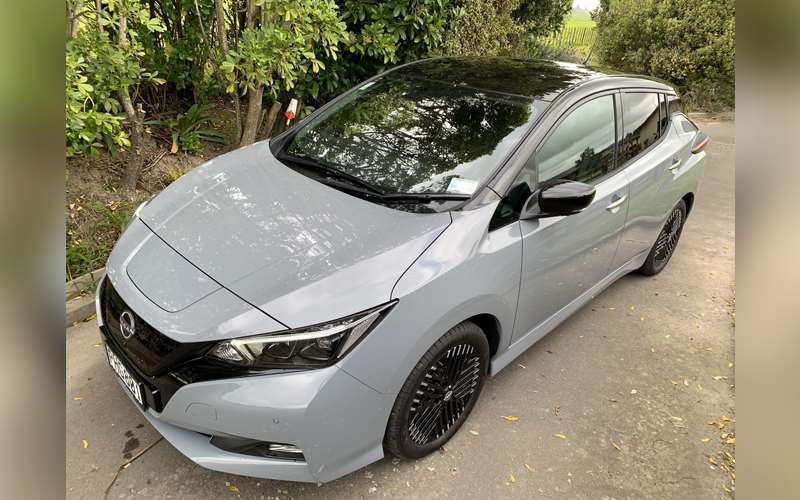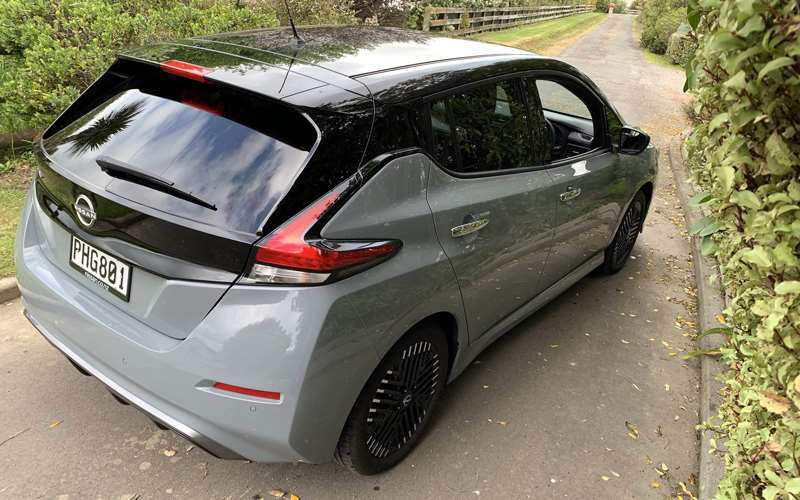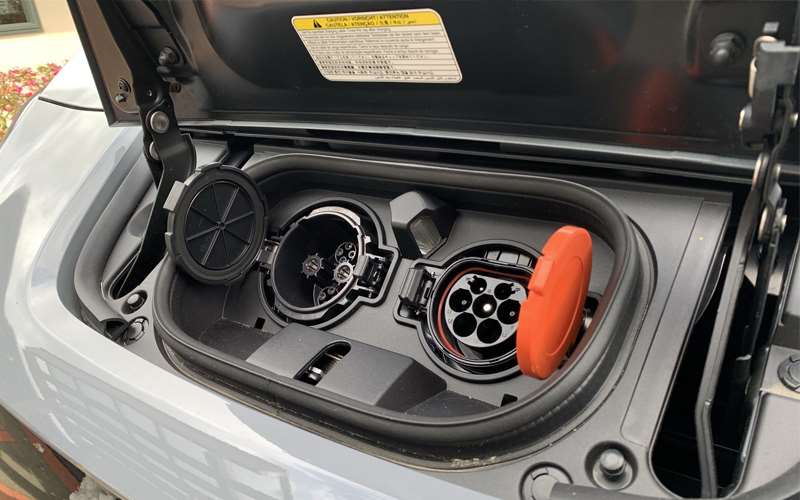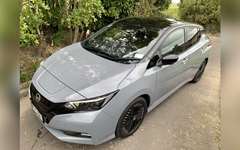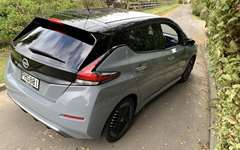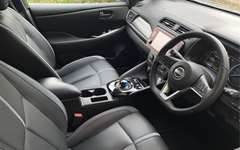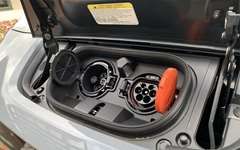Salute the world’s first mass-market electric, the car that has introduced more New Zealanders to battery-only driving than any other.
To be fair, the vast majority of Leafs on our roads have arrived here as used imports, with very few provisioned as new cars by Nissan NZ. Though new sales picked up in 2022 (which surely shows the power of rebates), the Leaf still isn’t succeeding as strongly in the brand-new format as many other electric cars.
Anyway, it’s an interesting time for Leaf, given there are so many indications the current car could well be the last.
Nissan’s new electric push is with the Ariya, a five-seater SUV. It is already in production and while there’s no clarity from Nissan NZ as to when it will join its line-up, it will surely adopt it. Ariya represents as a new-era item — far more advanced technology in a different, sports utility/ crossover form that could have broader appeal to lifestyle-oriented New Zealanders than the current hatch shape.
Also, look how the market has changed. When the Leaf arrived, electric cars were for kooks. Now sentiment and opportunity have moved on considerably, to the point where buying electric is increasingly mainstream.
The national distributor is showing indomitable spirit in continuing to represent the Leaf in NZ-new form. Actually, make that a plural. At time of writing, there were effectively four versions on the books. The entry $63,990 40kWh car and the higher-end $72,990 62kWh E-Plus in fresh off the boat MY23 formats and outgoing versions of each that are slightly cheaper.
While Leaf ticks off on fundamentals and its build quality is excellent, it’s patently starting to look and feel a bit time-worn, and is superseded by others in some respects in specification, range and performance. Nothing quite dates an EV, perhaps, more than the side-by-side provision of old-school Type One AC and more common Type Two AC/DC charging ports.
Value-for-money also comes under the spotlight. Even though it is cheaper now than it once was, given what some other brands are able to do in the low (pre-rebate) $50k zone, the proposition the Leaf is an affordable EV still seems less assured in brand-new form than in pre-owned. Maybe it costs less to build a car in China.
Nonetheless, credit to Nissan for doing all it can to keep the Leaf credible, even in ways that require fine-print digging to understand. For MY203 it has been dabbling with the battery chemistry to improve the usable capacities; . The 39kWh usable for the 40kWh and 59kWh for the 62kWh.
As much as you’re getting more of what’s on offer, packing a 40kWh unit is surely definitely going ‘‘lite’’ now; the only NZ-new cars delivering with less are smaller and lighter.
Driving range is one of the most important things for those considering an EV and the cited maximum range of 270km, though gauged from WLTP testing, which is closer to what is considered real-world driving than the old procedure, doesn’t fizz any more.
Also, from this experience, I’d still say it should be considered an ‘‘at very best’’ estimate. During the test, the car was driven daily in open road and urban environments, clocking 80-100km on most days. I used a blend of eco mode on and off and e-Pedal. I trickle-charged most nights, but not all, and the lowest remaining range was 70km, which is about as close to ‘‘empty’’ I’d dare go in an EV.
Mind you, most EVs tend to be driven short distances and most owners are committed to keeping them topped up. Let’s not forget that Leaf, though a bigger product than it originally was and certainly not one fazed by the 100kmh environment, is still designed foremost for excellence in urban operability.
But it’s logical to think the bigger battery version is the better choice for taking on prolonged trips, simply because you’ll spend less time looking for replenishment. What is more challenging when Leaf is on a shortlist in either format, though, is that cheaper rivals go further and pack bigger batteries.
One point of difference with Leaf within that crowd is the styling. You can understand why most EVs are either SUVs or crossovers – those formats are hot and taller cars offer alluring battery packaging solutions – but, at same token, it’s still quite good to run one with a hatchback shape.
Even though it is from the period when alternatively fuelled cars had to look different in order to succeed, and is not an emotional shape per se, it’s not a poor-looking car. The tester’s contrasting black roof and door mirrors enhanced the kerbside appeal and much of the exterior detailing is really well executed, too. For a mainstream car, it feels crafted.
Park the NZ-new product next to year-old JUC equivalents and you will have to be a bit of a nerd to pick the differences, but they do exist. Nissan’s endless pursuit of aero efficiency has seen the grille and front bumper revised, a different small spoiler zonked on to the rear deck. The shaping of the side skirts is altered at the rear for smoother air flow.
The most immediately obvious difference is with the alloys; the spokes, being a mass of symmetrical slates, are less disruptive to air flow. That might have been achieved, but whoever drew them up never gave thought to having to clean them. You’d need a toothbrush to shift the brake dust and road grime.
The cabin seems to have escaped any revision. Nissan’s commitment to keeping the same buttons, knobs and switches in everything it builds for eons pulls it back into a past beyond its actual years. Plastics aren’t flash, either.
But it’s solidly constructed, set to be hard-wearing and the control layout is easily fathomed.
The seven-inch infotainment touchscreen looks substantial thanks to a large bezel surround. It is easiest operated when the car is stationary, as the touch-sensitive buttons are small.
The instrument display is better resolved and can be adjusted to display a variety of data, including power usage and remaining range. The drive selector has a quirky movement, but you get used to it.
The front chairs are quite comfy and the driving position fine for the tall — overall the cabin is quite spacious. It has a big boot, enlarged by the 60/40 split folding rear seats, so it’s utterly perplexing why Nissan has plonked the stereo’s substantial amp at the halfway point, spanning much of the space between the wheel arches. Every time you put something heavy in there it will be with misgiving about doing damage.
Range limitations notwithstanding, from what was my first decent time behind the wheel of a distributor-provided Leaf it’s easy to understand why it’s a model many seriously consider as being fine as an only car.
The driving experience isn’t in the same wow-worthy level delivered by a Kia EV6 or Hyundai Ioniq 5, not least for performance — the usual EV step-off briskness is there, but it hasn’t the punch.
Yet it’s well-executed for quietness and refinement. Wind and road noise are well-contained; to point, actually, when the faint whine of the electric drivetrain is the primary aural involvement. At open road speed the suspension seems a little on the firm side, but I’m guessing that’s to help it cope with the weight.
Not everyone that buys a Leaf is likely to try exploring the limits of its chassis performance, but if you are in a hurry, it holds the road well, even on its low rolling resistance tyres. Overall, though, dynamic appeal is not overwhelming.
A positive feature is the e-Pedal, which provides one-pedal driving, allowing you to accelerate and (mostly) brake by using just the throttle pedal. When you lift your foot off it, the system begins to regenerate energy, influencing enough to slow the car right down to a stop if needed. It will also hold the car, even on a hill, until you reapply the throttle. It does take a little bit of time to get used to, but the benefits are obvious, particularly around town and in heavier stop-start traffic.
Other tech? Traffic sign recognition is a handy feature as well as the ProPilot system, an advanced form of adaptive cruise control using an array of sensors, radar and a camera system to monitor what is going on, plus also provide assistance with parking.
The EV landscape has changed significantly, and this generation Leaf has had to contend with a gaggle of impressive challengers, with more to come next year. It’s no longer the bright new thing.
Even so, it still does what it needs to do, and if the driving and operational elements occur in an unobtrusive, inoffensive and not particularly involving way, let’s not forget the factors, including fortitude, that have made it the white T-shirt of the EV world.
Leaf. The car that did. The car that didn’t. The car that really changed everything within EVdom. It was great to finally meet, and have chance to salute, this hardy trouper. But the experience really reinforced that this is a sunset period. If Nissan wants to get back to the top of the tree, it needs Ariya.
- Richard Bosselman (Photos: Richard Bosselman)
